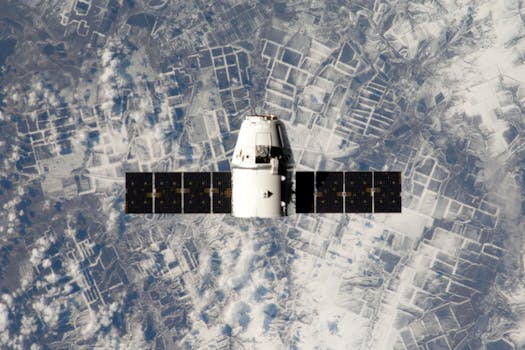The Future of Satellites: Revolutionizing Global Connectivity
The future of satellites is poised to revolutionize global connectivity, enabling faster and more reliable communication services. With advancements in space technology, satellites are becoming increasingly important for various industries, including telecommunications, navigation, and weather forecasting.

The Future of Satellites: Revolutionizing Global Connectivity
The future of satellites is poised to revolutionize global connectivity, enabling faster and more reliable communication services. With advancements in space technology, satellites are becoming increasingly important for various industries, including telecommunications, navigation, and weather forecasting. In this article, we will explore the future of satellites and their role in shaping the global connectivity landscape.
Introduction to Satellites

Satellites have been in use for several decades, providing a range of services, including television broadcasting, telecommunications, and navigation. However, the future of satellites is expected to be even more exciting, with the development of new technologies and innovative applications. One of the key trends in the satellite industry is the increasing use of small satellites, also known as CubeSats. These small satellites are relatively inexpensive to launch and can be used for a variety of purposes, including Earth observation, communication, and scientific research.
Advancements in Satellite Technology

Advancements in satellite technology are driving the growth of the industry, enabling the development of more efficient and cost-effective satellites. Some of the key advancements include the use of advanced materials, such as carbon fiber, and the development of more efficient propulsion systems. Additionally, the use of advanced software and data analytics is enabling satellites to process and transmit large amounts of data more efficiently. The development of new satellite constellations, such as OneWeb and SpaceX’s Starlink, is also expected to play a major role in the future of satellites, providing global coverage and enabling a range of new services, including broadband internet and IoT connectivity.
Applications of Satellites

Satellites have a range of applications, including telecommunications, navigation, weather forecasting, and Earth observation. In the telecommunications sector, satellites are used to provide broadband internet and mobile connectivity, particularly in remote and underserved areas. In the navigation sector, satellites are used to provide location-based services, such as GPS and GLONASS. In the weather forecasting sector, satellites are used to monitor weather patterns and provide early warnings for severe weather events. In the Earth observation sector, satellites are used to monitor the environment, track climate change, and provide insights into natural resources, such as water and minerals.
Challenges and Opportunities

Despite the many opportunities presented by satellites, there are also several challenges that need to be addressed. One of the key challenges is the increasing amount of space debris in Earth’s orbit, which can pose a risk to operational satellites. Another challenge is the need for more efficient and sustainable launch systems, which can reduce the cost and environmental impact of launching satellites. However, these challenges also present opportunities for innovation and growth, driving the development of new technologies and business models. The future of satellites is expected to be shaped by a range of factors, including technological advancements, changing market trends, and evolving regulatory frameworks.
See more:
